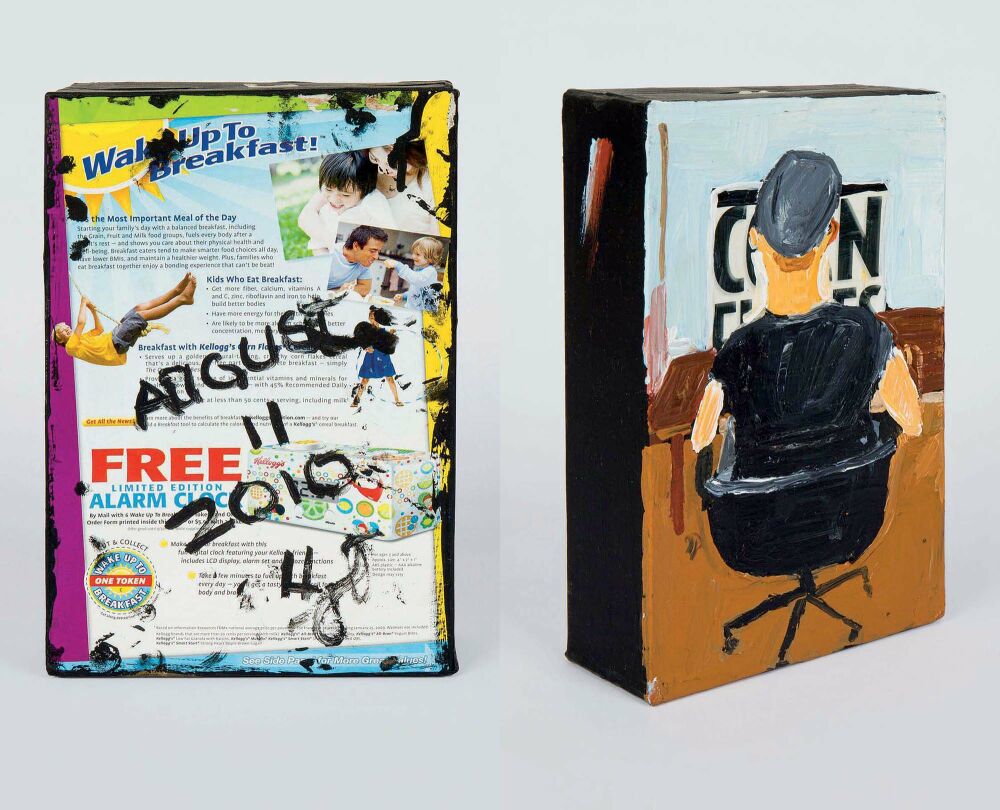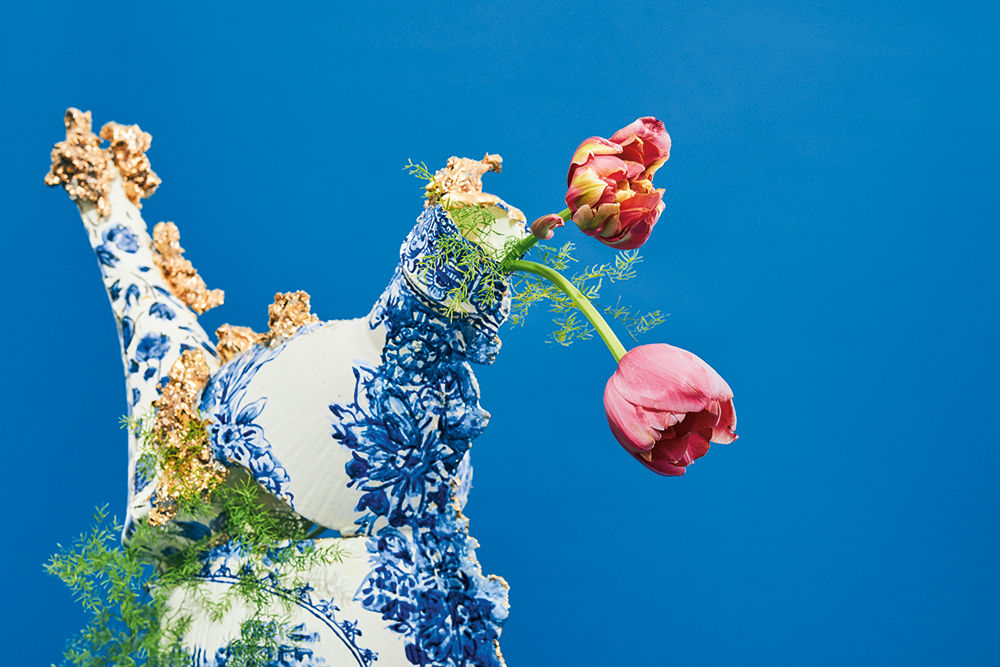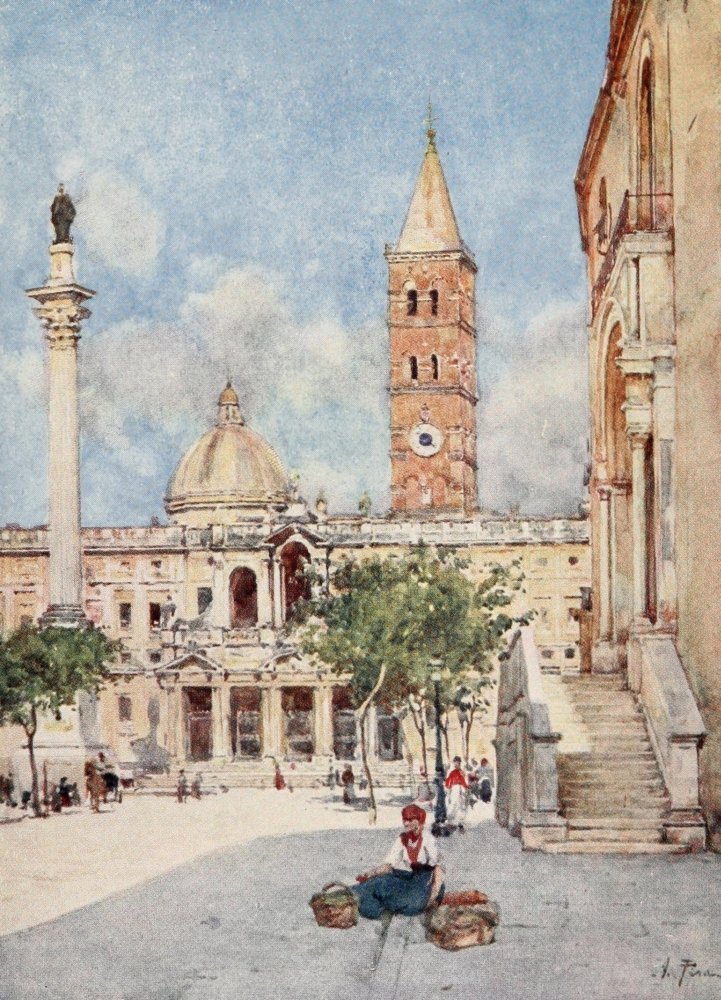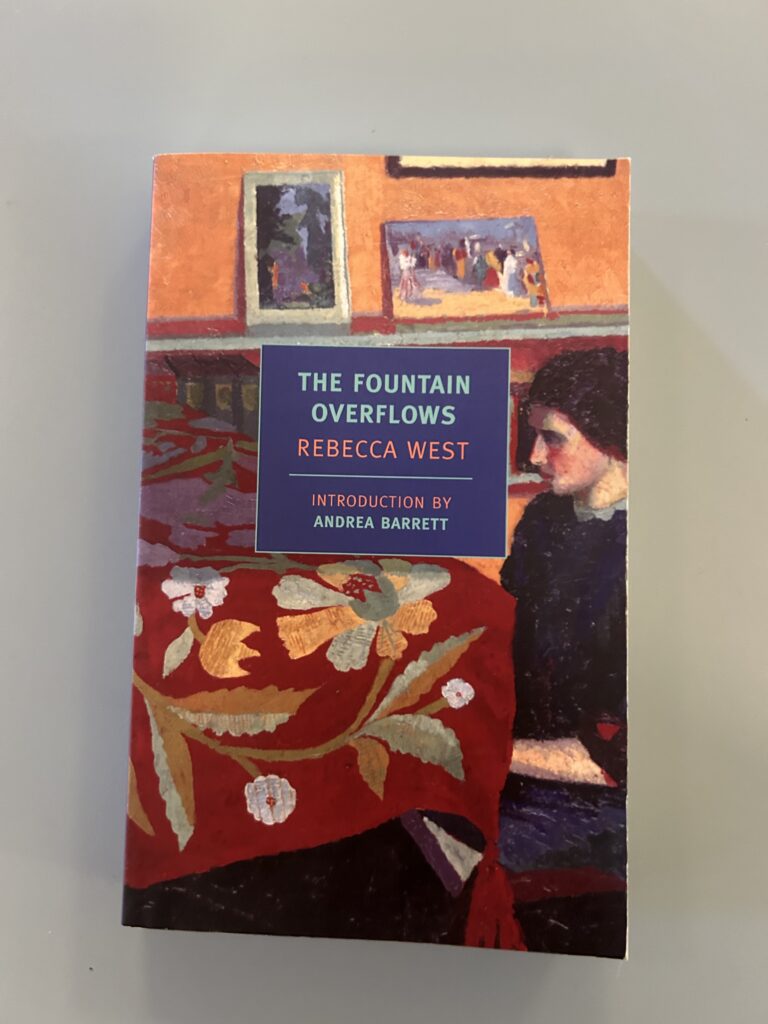Ernest Burkhart and his wife, Mollie, née Kyle. Public domain, via Wikimedia Commons.
In spring 2021, a photo still from Martin Scorsese’s Killers of the Flower Moon went viral. The image features the film’s protagonists, Mollie Kyle (Lily Gladstone) and Ernest Burkhart (Leonardo DiCaprio), seated at a table, having just finished a meal. The table is Mollie’s table, in her home, in Osage County, Oklahoma. The larger setting is one of the most insidious criminal conspiracies in American history, a period known as the Osage Reign of Terror, wherein the white cattle rancher William King Hale colluded with associates, including Ernest, his nephew, to steal Osage oil fortunes. Sometimes this scheme involved white men marrying into Osage families and then sometimes murdering their new lovers. In the photograph, Mollie gazes over at Ernest, who’s looking up at the ceiling. In the frame, she is a Mona Lisa in semi-profile, a muse of multitudinous moods. What is that inscrutable expression on her face? Is she being coy? Flirtatious? Is that an inquisitive look? Or one of bemusement? Is she laughing at her beau, or at her predicament—the condition of falling in love with a racist doofus she knows is mainly interested in her money? (Oof.) The still became a meme when the New York Post tweeted that DiCaprio was “unrecognizable” in character; the replies underlined the actor’s utter recognizability. This still, an object of public fascination more than two years before the film’s general release, became a meme as social media users poked fun at the Post, but the meme cycle also enabled viewers to meditate on the interpersonal dynamics in the photo, dynamics they would be unable to view in context. The image is a distillation of the film’s central mysteries, and reading it is training for assessing the big questions at the heart of the movie: What does she see when she looks at him? What should we see when we look at them?
It’s fitting that a photograph was the film’s first offering, because Scorsese is always calling attention to the photograph as a marvel, and as an object, in his work. The director’s signature credit line— “A Martin Scorsese Picture”—is delightfully archaic. The phrase is redolent of the studio system, painted sets, and actors in redface. This is a picture that is partly about making pictures, and the tensions therein. Within the film’s first moments, the audience witnesses a succession of murders of Osage citizens. The deceased are posed with piety, stretched out on their beds, decked out in their best, arms crossed against their chests; this sequence, and some other shots interspersed throughout the film, recall James Van Der Zee’s The Harlem Book of the Dead, which features the legendary portraitist’s stately photographs of funeral pageantry. And then there are the more direct references to image-making, mostly in montages of vernacular photography: souvenir photos at rodeos; roustabouts posing before a cameraman; wedding portraits; home video–style clips; newsreels of major events, including of the discovery of oil on Osage land, of members of the Osage Nation traveling to Washington, D.C., to talk with President Coolidge about the murders, and of the 1921 Tulsa Race Massacre, in which that city’s white citizens killed numerous black residents and destroyed a thriving black commercial district. There are gorgeous studio portraits of Osage folks—who, the film tells us, call the moon “Mother”—sitting inside a paper moon, rendering that kitschy, sentimental photo format with cosmological poetry. As members of the Osage Nation line up to receive royalties from their oil allotments, a photographer advertises his services by using an emotional appeal: “Thirty-dollar photo for posterity. Don’t you want to preserve your family history?”
Of course, given the white residents’ attempts at exterminating the Osage, that last line is a bleak joke. In Killers, there’s a stark boundary between preservation and exploitation, one as distinct as that which demarcates the Osage reservation and off-rez areas. We’re constantly seeing people take in images, or participate in the making of their own: we see them looking, or being looked at, which adds another touch of paranoia to a film about a sprawling criminal conspiracy. But these metatextual scenes also underscore the limits of photography, and the fact that, in spite of photographic evidence, the brutality continues; as the end of the movie confirms, making art is no absolution. The film’s picture-taking brings to mind the ethnological work of someone like Edward S. Curtis, whose twenty-volume photographic study The North American Indian, comprising documentation of dozens of Indigenous nations, was initially funded by J. P. Morgan. Curtis’s work, rife with what the Diné artist and photographer Will Wilson calls “lacquered romanticism,” imprinted Indigenous images as hopelessly archival; in Curtis’s work they are a “vanishing people” tragically consigned to the past.
Killers of the Flower Moon, Scorsese’s most demanding epic of American grotesquerie, gestures toward this anxiety about the future. The film opens with an Osage child witnessing a ritual that the elders rightly worry will die out, and closes with a scene that serves as something like a contemporary bookmark to the opening, underscoring survival amid torturous conditions. Parts of this film can be grueling to watch, and it’s my sense that not all of the murders needed to be presented as graphically as they are. But the movie is also, at times, breathtakingly beautiful. The violence contrasts with the delicacy and intricacy of some of its themes. Maybe the killing is just Marty being Marty; after all, his oeuvre is filled with some of cinema’s most indelible sequences of violence, much of it slapstick, some of it deadly serious. Or maybe the occasionally grisly depictions are in service of twenty-first-century expectations of unambiguous moral transparency: seeing is believing, and here, it’s hard to see the cruelty done to Indigenous people and come away with any sense of moral equivocation on the part of the filmmakers.




















